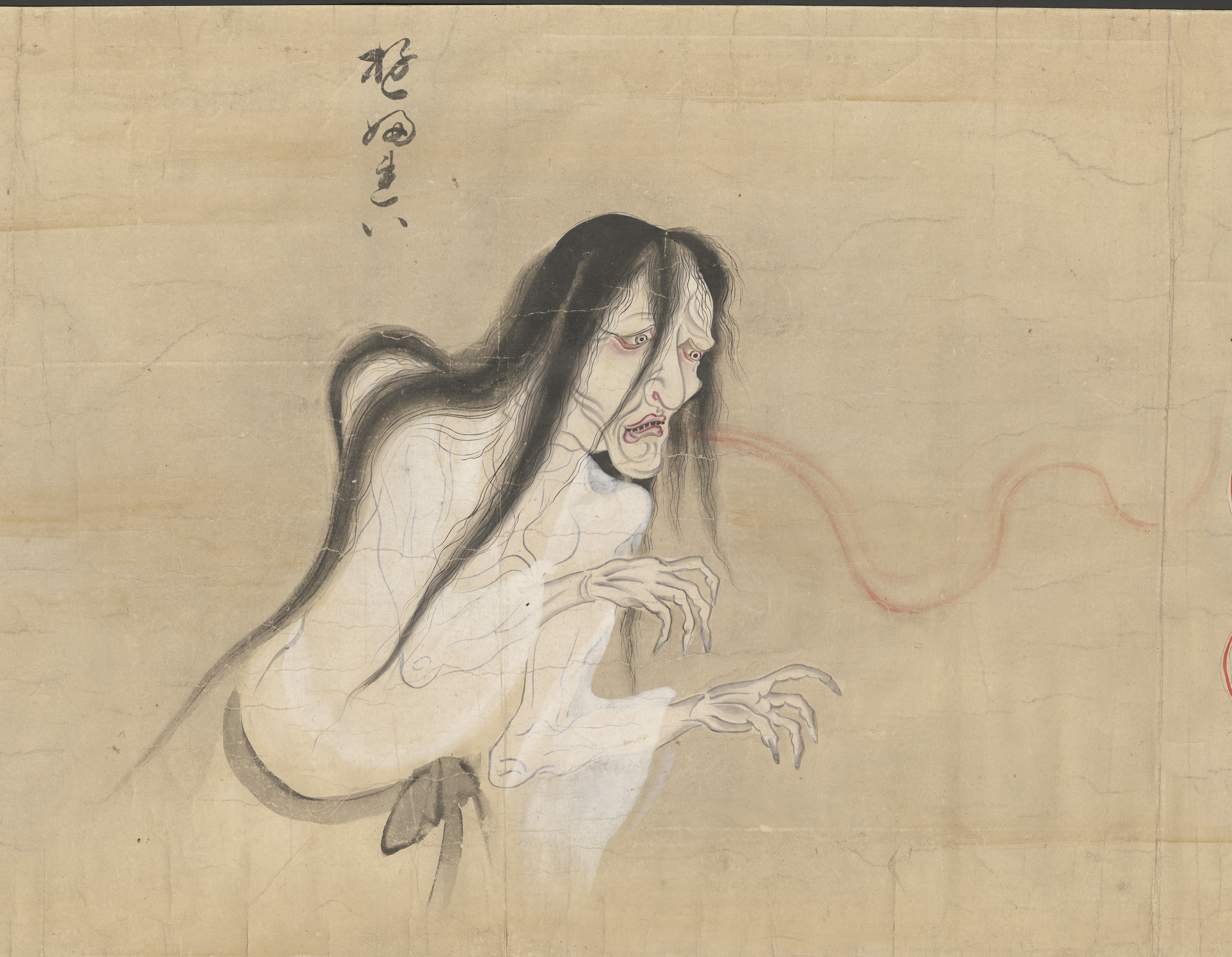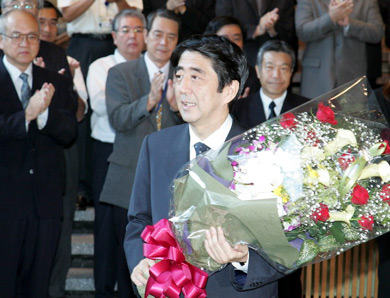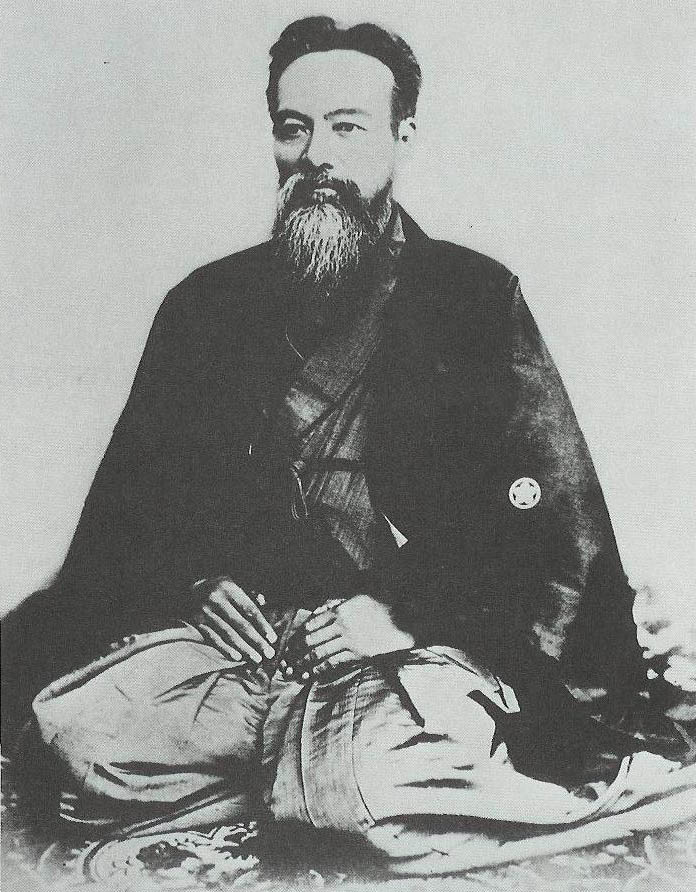|
Zenshō-an
Zenshō-an (全生庵) is a Buddhist Rinzai Zen temple, located in Taitō, Tokyo, Japan. It has a large collection of Japanese ''yūrei'' paintings, which are normally exhibited in August, the traditional month of spirits and ghosts. These paintings were most probably kept by families during the Edo period also to ward off evil. The temple has long been popular with influential Japanese figures, including Prime Ministers Shinzo Abe and Nakasone Yasuhiro. A large exhibition was shown the summer of 2015 in cooperation with the Tokyo University of the Arts. History The temple was founded in 1883 by Yamaoka Tesshū , also known as Ono Tetsutarō or Yamaoka Tetsutarō, was a famous samurai of the Bakumatsu period, who played an important role in the Meiji Restoration. He is also noted as the founder of the '' Itto Shoden Muto-ryu'' school of swordsmanship. .... The temple retained significant influence with Japanese political leadership throughout the twentieth century. Refer ... [...More Info...] [...Related Items...] OR: [Wikipedia] [Google] [Baidu] |
Taitō
is a special ward in the Tokyo Metropolis in Japan. In English, it is known as Taitō City. As of May 1, 2015, the ward has an estimated population of 186,276, and a population density of 18,420 persons per km2. The total area is . This makes Taito ward the smallest of Tokyo's wards in area, and third-smallest in population. History The ward was founded on March 15, 1947, with the merger of the old Asakusa and Shitaya wards when Tokyo City was transformed into Tokyo Metropolis. During the Edo period, the Yoshiwara licensed quarter was in what is now Taitō. Taitō shares the same Chinese characters, "台東" with Taitung, a city in Taiwan. Geography Situated in the northeastern portion of the wards area of Tokyo, Taitō is surrounded by five other special wards: Chiyoda, Bunkyō, Arakawa, Sumida and Chūō. Districts and neighborhoods ;Asakusa area * Asakusa * Asakusabashi * Hanakawado * Hashiba * Higashi-Asakusa (East Asakusa) * Imado * Kaminarimon * Kiyokawa ... [...More Info...] [...Related Items...] OR: [Wikipedia] [Google] [Baidu] |
Yūrei
are figures in Japanese folklore analogous to the Western concept of ghosts. The name consists of two kanji, (''yū''), meaning "faint" or "dim" and (''rei''), meaning "soul" or "spirit". Alternative names include , meaning ruined or departed spirit, , meaning dead spirit, or the more encompassing or . Like their Western counterparts, they are thought to be soul, spirits barred from a peaceful afterlife. Japanese afterlife According to traditional Japanese beliefs, all humans have a Spirit (animating force), spirit or soul called a . When a person dies, the ''reikon'' leaves the body and enters a form of purgatory, where it waits for the proper funeral and post-funeral rites to be performed so that it may join its ancestor worship, ancestors. If this is done correctly, the ''reikon'' is believed to be a protector of the living family and to return yearly in August during the Obon, Obon Festival to receive thanks. However, if the person dies in a sudden or violent manner such ... [...More Info...] [...Related Items...] OR: [Wikipedia] [Google] [Baidu] |
Rinzai Zen
The Rinzai school (, zh, t=臨濟宗, s=临济宗, p=Línjì zōng), named after Linji Yixuan (Romaji: Rinzai Gigen, died 866 CE) is one of three sects of Zen in Japanese Buddhism, along with Sōtō and Ōbaku. The Chinese Linji school of Chan Buddhism was first transmitted to Japan by Myōan Eisai (1141 –1215). Contemporary Japanese Rinzai is derived entirely from the Ōtōkan lineage transmitted through Hakuin Ekaku (1686–1769), who is a major figure in the revival of the Rinzai tradition. History Rinzai is the Japanese line of the Chinese Linji school of Chan Buddhism, which was founded during the Tang dynasty by Linji Yixuan (Japanese: Rinzai Gigen). Kamakura period (1185–1333) Though there were several attempts to establish Rinzai lines in Japan, it first took root in a lasting way through the efforts of the monk Myōan Eisai. In 1168, Myōan Eisai traveled to China, where he studied Tendai for twenty years. In 1187, he went to China again, and returned to J ... [...More Info...] [...Related Items...] OR: [Wikipedia] [Google] [Baidu] |
Tokyo
Tokyo, officially the Tokyo Metropolis, is the capital of Japan, capital and List of cities in Japan, most populous city in Japan. With a population of over 14 million in the city proper in 2023, it is List of largest cities, one of the most populous urban areas in the world. The Greater Tokyo Area, which includes Tokyo and parts of six neighboring Prefectures of Japan, prefectures, is the most populous metropolitan area in the world, with 41 million residents . Lying at the head of Tokyo Bay, Tokyo is part of the Kantō region, on the central coast of Honshu, Japan's largest island. It is Japan's economic center and the seat of the Government of Japan, Japanese government and the Emperor of Japan. The Tokyo Metropolitan Government administers Tokyo's central Special wards of Tokyo, 23 special wards, which formerly made up Tokyo City; various commuter towns and suburbs in Western Tokyo, its western area; and two outlying island chains, the Tokyo Islands. Although most of the w ... [...More Info...] [...Related Items...] OR: [Wikipedia] [Google] [Baidu] |
Edo Period
The , also known as the , is the period between 1600 or 1603 and 1868 in the history of Japan, when the country was under the rule of the Tokugawa shogunate and some 300 regional ''daimyo'', or feudal lords. Emerging from the chaos of the Sengoku period, the Edo period was characterized by prolonged peace and stability, urbanization and economic growth, strict social order, Isolationism, isolationist foreign policies, and popular enjoyment of Japanese art, arts and Culture of Japan, culture. In 1600, Tokugawa Ieyasu prevailed at the Battle of Sekigahara and established hegemony over most of Japan, and in 1603 was given the title ''shogun'' by Emperor Go-Yōzei. Ieyasu resigned two years later in favor of his son Tokugawa Hidetada, Hidetada, but maintained power, and defeated the primary rival to his authority, Toyotomi Hideyori, at the Siege of Osaka in 1615 before his death the next year. Peace generally prevailed from this point on, making samurai largely redundant. Tokugawa sh ... [...More Info...] [...Related Items...] OR: [Wikipedia] [Google] [Baidu] |
Prime Minister Of Japan
The is the head of government of Japan. The prime minister chairs the Cabinet of Japan and has the ability to select and dismiss its ministers of state. The prime minister also serves as the commander-in-chief of the Japan Self-Defense Forces, Japan Self Defence Forces. The National Diet (parliament) nominates the prime minister from among its members (typically from among the members of the House of Representatives (Japan), House of Representatives). He is then formally appointed by the Emperor of Japan, emperor. The prime minister must retain the confidence of the House of Representatives to remain in office. The prime minister lives and works at the Naikaku Sōri Daijin Kantei (Prime Minister's Official Residence) in Nagatachō, Chiyoda, Tokyo, Chiyoda, Tokyo, close to the National Diet Building. List of prime ministers of Japan, Sixty-five men have served as prime minister, the first of whom was Itō Hirobumi taking office on 22 December 1885. The List of prime minist ... [...More Info...] [...Related Items...] OR: [Wikipedia] [Google] [Baidu] |
Shinzo Abe
Shinzo Abe (21 September 1954 – 8 July 2022) was a Japanese politician who served as Prime Minister of Japan and President of the Liberal Democratic Party (Liberal Democratic Party (Japan), LDP) from 2006 to 2007 and again from 2012 to 2020. He was the List of prime ministers of Japan by time in office, longest-serving prime minister in Japanese history, serving for nearly nine years in total. Born in Tokyo, Abe was a member of the Satō–Kishi–Abe family as the son of LDP politician Shintaro Abe and grandson of prime minister Nobusuke Kishi. He graduated from Seikei University and briefly attended the University of Southern California before working in industry and party posts, and was first elected to the Japanese House of Representatives, House of Representatives in 1993 Japanese general election, 1993. Abe was LDP secretary-general from 2003 to 2004 and Chief Cabinet Secretary under Junichiro Koizumi from 2005 to 2006, when he replaced Koizumi as prime minister. Abe b ... [...More Info...] [...Related Items...] OR: [Wikipedia] [Google] [Baidu] |
Nakasone Yasuhiro
was a Japanese politician who served as Prime Minister of Japan, prime minister of Japan from 1982 to 1987. His political term was best known for pushing through the privatization of state-owned companies and pursuing a hawkish and pro-U.S. foreign policy. Born in Gunma Prefecture, Nakasone graduated from Tokyo Imperial University and served in the imperial navy during the Pacific War. After the war, he entered the National Diet in 1947 and rose through the ranks of the Liberal Democratic Party (Japan), Liberal Democratic Party, serving as chief of the Minister of Defense (Japan)#Director general of the Defense Agency, Defense Agency from 1970 to 1971 under Eisaku Satō, international trade and industry minister from 1972 to 1974 under Kakuei Tanaka, and administration minister from 1980 to 1982 under Zenkō Suzuki. As prime minister, he passed large defense budgets and controversially visited the Yasukuni Shrine. A conservative contemporary of U.S. president Ronald Reagan, Nak ... [...More Info...] [...Related Items...] OR: [Wikipedia] [Google] [Baidu] |
Tokyo University Of The Arts
or is a school of art and music in Japan. Located in Ueno Park, it also has facilities in Toride, Ibaraki, Yokohama, Kanagawa, Kitasenju and Adachi, Tokyo. The university has trained artists in the fields of painting, sculpture, crafts, inter-media, sound, music composition, traditional instruments, art curation and global arts. History Under the establishment of the National School Establishment Law, the university was formed in 1949 by the merger of the and the , both founded in 1887. The former Tokyo Fine Arts School was then restructured as the Faculty of Fine Arts under the university. Originally male-only, the school began to admit women in 1946. The graduate school opened in 1963, and began offering doctoral degrees in 1977. The doctoral degree in fine art practice initiated in the 1980s was one of the earliest programs to do so globally. After the abolition of the National School Establishment Law and the formation of the National University Corporations on April 1, ... [...More Info...] [...Related Items...] OR: [Wikipedia] [Google] [Baidu] |
Yamaoka Tesshū
, also known as Ono Tetsutarō or Yamaoka Tetsutarō, was a famous samurai of the Bakumatsu period, who played an important role in the Meiji Restoration. He is also noted as the founder of the '' Itto Shoden Muto-ryu'' school of swordsmanship. Along with Katsu Kaishū and Takahashi Deishū they were called “The Three Boats of the Bakumatsu (幕末の三舟)”. Early life Yamaoka was born in Edo (present-day Tokyo) as Ono Tetsutaro, where his father was a retainer of the Tokugawa shogunate and his mother was the daughter of a Shinto priest from Kashima Shrine. Yamaoka practiced swordsmanship from the age of nine, starting in the '' Jikishinkage-ryū'' tradition. After that he learned ''Hokushin Ittō-ryū'' from Inoue Hachirō, who was asked by Yamaoka Tesshū's father to teach his son. Later his family moved to Takayama where he began the '' Nakanishi-ha Ittō-ryū'' style of fencing. When he was seventeen, he returned to Edo and joined the government's ''Kobukan'' Milit ... [...More Info...] [...Related Items...] OR: [Wikipedia] [Google] [Baidu] |






